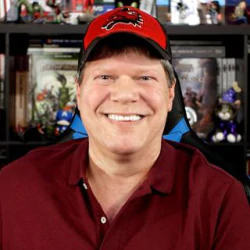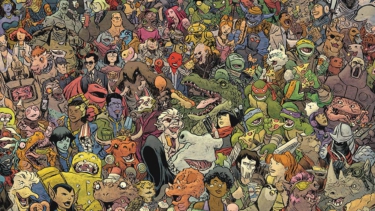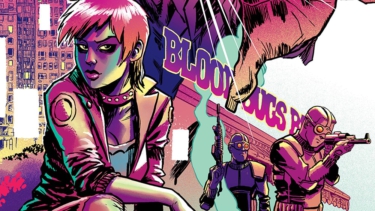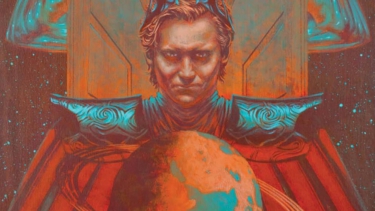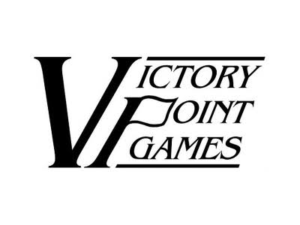
Alan is currently a professor at the Art Institute of California: Orange County, where he teaches Game Design, Prototyping, and Project Management to the next generation of game makers — he regards this as an “official” instance of his life-long passion for teaching. He also co-founded and owns Victory Point Games, a publishing company for budget-priced games based around submissions from students and professional game designers alike — in fact he founded the company in order to give his students experience of the business side of game publishing.
Alan was kind enough to take time out of his busy schedule this holiday season to tackle some questions I had about his experience in the industry as well as Victory Point Games. I do want to point out that we conducted this interview by way of email so I’ll apologize upfront for any sort of problems in flow or presentation; certainly that’s a reflection of my interview skills as opposed to anything else.
Jeff McAleer: Alan, let’s get things rolling by talking a little bit about yourself before you became involved in the gaming industry. What were some of the first games you recall playing? Was there any one title that stands out that made you think, “Hey! This is something I want to do – publish games!” or was it the overall experience of gaming that sparked the light bulb of invention?

Alan was always an avid gamer, spending too much time playing board and card games in his youth. Two of his early gaming endeavors were devising rules for pari-mutuel Monopoly and playing poker with the kids at school for their lunch money.
It was during the summer of his 13th year that Alan’s life changed. A piece of junk mail arrived in his name and, being a typical bored teenager, he read it. The copy began, “Strategy & Tactics magazine: the military history magazine with. . .”
“Oh, brother,” he though. “Military history? How boring.” Still, he had nothing better to do than open the brochure. The sales pitch concluded by adding “. . .a game in it!”
That was it! New games that could be subscribed to! Wow!!
Yes, it was Jim Dunnigan, Redmond Simonsen and company at SPI, who found me though the Boys Life magazine mailing list that started this journey. The games were really interesting, cerebral and challenging, and I loved that. I’m pretty sure that my mother still hasn’t forgiven them. 😉
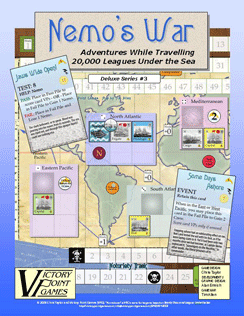 JM: Ah, good old Mr. Dunnigan and the thought of SPI brings back great memories! I used to have a copy of Jim’s The Complete Wargames Handbook and I certainly wish I had held on to my original edition of SPI’s War of the Ring! I’m still kicking myself for not keeping the hundreds of games I picked up in the 1980s and 90s!
JM: Ah, good old Mr. Dunnigan and the thought of SPI brings back great memories! I used to have a copy of Jim’s The Complete Wargames Handbook and I certainly wish I had held on to my original edition of SPI’s War of the Ring! I’m still kicking myself for not keeping the hundreds of games I picked up in the 1980s and 90s!
So we know how your interest in board games got started, what was your first foray into the production side of things?
AE: Well, I started writing gaming articles while failing English in High School. My first published piece was in Don Lowry’s old Campaign magazine with a review and analysis of The Russian Campaign by Jedko/Avalon Hill, entitled, “Is This Game Really Necessary?” Goodness, it was an epic piece, sent back to me by the editor marked up all to heck with a note about it being promising and that I should please correct, retype and submit another draft. That was a lot of pages to hammer out on my typewriter for the umpteenth time, but I did it, sent it back, and never heard another word about it until one day in late 1977 the magazine arrived in the mail with my article in it. It was the cover story, no less!
From there it wasn’t long before I was looking for work at Balboa Game Company here in Long Beach, California, then doing some out-of-house playtesting for a few games and my life pretty much spun out of control from there. Along the way I became a High School History Teacher, but mostly stuck with my vow of poverty to make games.
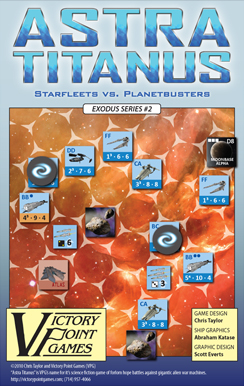
AE: The full story about the birth of VPG is here, but suffice it to say that I once again started a game company (after long ago vowing, “Never again!”) to help my students. They needed that experience and a “clubhouse” where they would work on each other’s games and I and other game industry veterans could be there to help them. Fortunately, poker paid for all the startup costs, and so it wasn’t too long before we were in business with our small format, “school project size” games.
As for being the mad haberdasher of VPG, I think I did have to invent every hat that is worn at VPG today, and am glad that I don’t have to do everything all the time anymore! Starting the company with partner-in-gaming, Vince DeNardo, we pretty much divvied up all the work and kept the company going the first 2 ½ years. We referred to ourselves as “two guys in an attic” making games. Well, now we’re on a major boulevard in Orange County with a handful of real employees, so hopefully in 2011 we can really pick things up and do more outreach and “real game company” things going forward.
JM: I find the story behind Victory Point Games to be an interesting one. One of the things that really stand out, on the company website, is the amount of transparency regarding VPG, its business model, focus and mission. Many companies producing games don’t seem to enjoy pulling back the curtain to show the wizard at work so to speak. In many cases we see quite a few companies simply advertising their titles without providing any solid information about what these very games even are that are on sale, let alone a behind the scenes look at the development process. What led to the decision to, for the most part, lay it all bare?
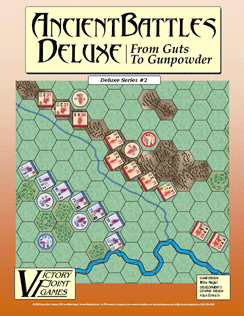 AE: How else are people going to learn? Remember, we’re a bunch of teachers and students at Victory Point Games. Our doors are open and everyone is welcome to come and help, playtest, and learn the business. That’s what we do here.
AE: How else are people going to learn? Remember, we’re a bunch of teachers and students at Victory Point Games. Our doors are open and everyone is welcome to come and help, playtest, and learn the business. That’s what we do here.
I think Supreme Wargame Designer and All Around Nice Guy, Joe Miranda, put it best. Our favorite part of wargaming back when, to us, it was all still new and exciting was reading in MOVES magazine about the works-in-progress at SPI and what those crazy guys were doing in playtesting and developing new project plus the neat behind-the scenes pictures of games in development. Reading the article on game design philosophy, lessons learned from game making and so forth – those were probably the second-best thing. At Victory Point Games, we believe that is the true spirit of game making and it has been too long lost upon our hobby. The true spirit of game making is not one of quiet, introspective research and design and closed-mouthed business trade secrets; it is one of fun, sharing, helping out, and working together to learn the art, craft and science of game development and publishing. My goodness, we don’t make super-secret spy technology here, we’re in the entertainment business making little games. No one is doing this to get rich, and most of the “pay” around here is in fun and the satisfaction of publishing some really amazing game products.
Look, 
JM: Something else that really peaks my interest about Victory Point is not only is it a publisher it’s also, as you’ve mentioned, a teaching environment. I understand that Victory Point Games in involved with The Art Institute: Orange County as part of a degree program. How is VPG integrated into the curriculum and what subjects are involved?
AE: It’s not formally “integrated”, it’s just that there is a lot of teacher and student overlap. VPG is the clubhouse across the street where the teachers hang out and the students can work and play. Because I teach there, you’ll find a lot of back-and-forth cooperation. Heck, some of my best grad students are helping out at VPG right now while they look for salaried jobs in the trenches of video game making. And we help them with that, too, of course, with free snacks and drinks on site, work stations to camp out at while they’re doing contract labor for other game companies, we provide recommendations to their new employers, etc.
Honestly, Victory Point Games is all about the next generation and the future of game making – the games themselves, those manufactured copies that you can purchase, are really just a nice by-product of that we offer to gamers who might be interested and they, in turn, buy them and help us pay the rent. It’s a pretty happy circle, really, and everyone is having fun and learning.
Join us tomorrow for the conclusion of my interview with Alan!
- Biohazard: Raging Outbreak | Kickstarter Preview - Apr 23, 2024
- Fallout: The Roleplaying Game Core Rulebook Reviewed - Apr 22, 2024
- Dr. Grordbort’s Scientific Adventure Violence Reviewed - Apr 21, 2024



